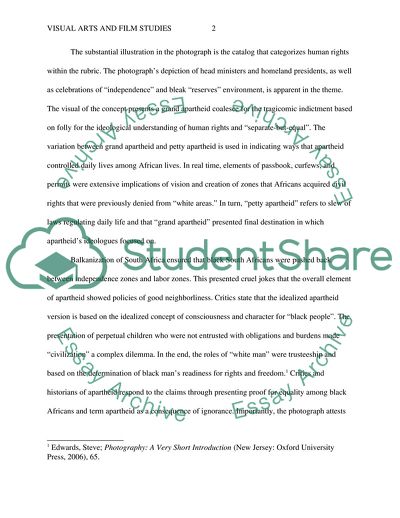Cite this document
(The Global Human Rights Claims Made Through the Publication of Photogr Essay, n.d.)
The Global Human Rights Claims Made Through the Publication of Photogr Essay. https://studentshare.org/visual-arts-film-studies/1852950-the-global-human-rights-claims-made-through-the-publication-of-photographer-ernest-coles-house-of-bondage
The Global Human Rights Claims Made Through the Publication of Photogr Essay. https://studentshare.org/visual-arts-film-studies/1852950-the-global-human-rights-claims-made-through-the-publication-of-photographer-ernest-coles-house-of-bondage
(The Global Human Rights Claims Made Through the Publication of Photogr Essay)
The Global Human Rights Claims Made Through the Publication of Photogr Essay. https://studentshare.org/visual-arts-film-studies/1852950-the-global-human-rights-claims-made-through-the-publication-of-photographer-ernest-coles-house-of-bondage.
The Global Human Rights Claims Made Through the Publication of Photogr Essay. https://studentshare.org/visual-arts-film-studies/1852950-the-global-human-rights-claims-made-through-the-publication-of-photographer-ernest-coles-house-of-bondage.
“The Global Human Rights Claims Made Through the Publication of Photogr Essay”. https://studentshare.org/visual-arts-film-studies/1852950-the-global-human-rights-claims-made-through-the-publication-of-photographer-ernest-coles-house-of-bondage.


